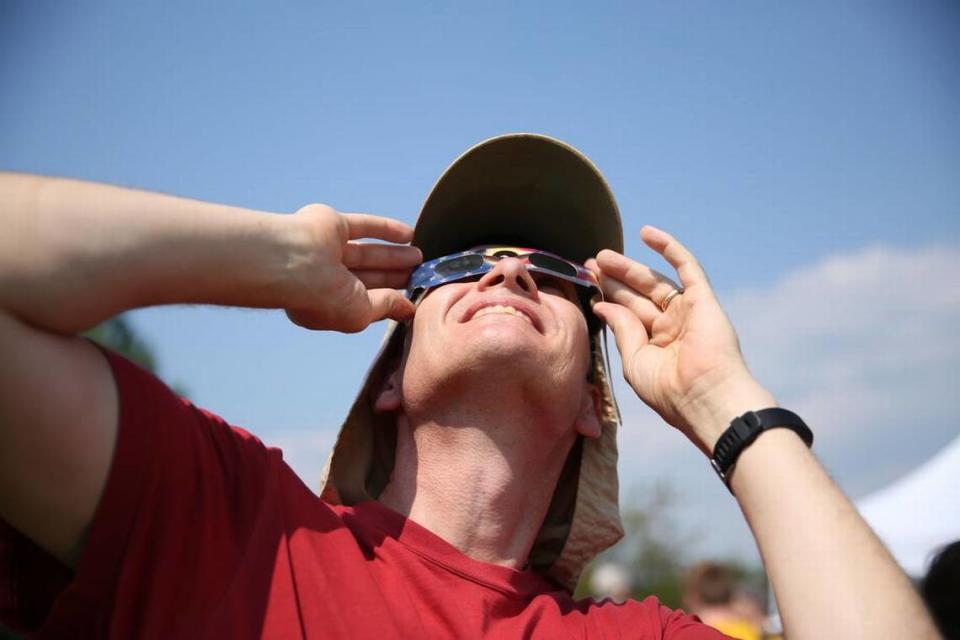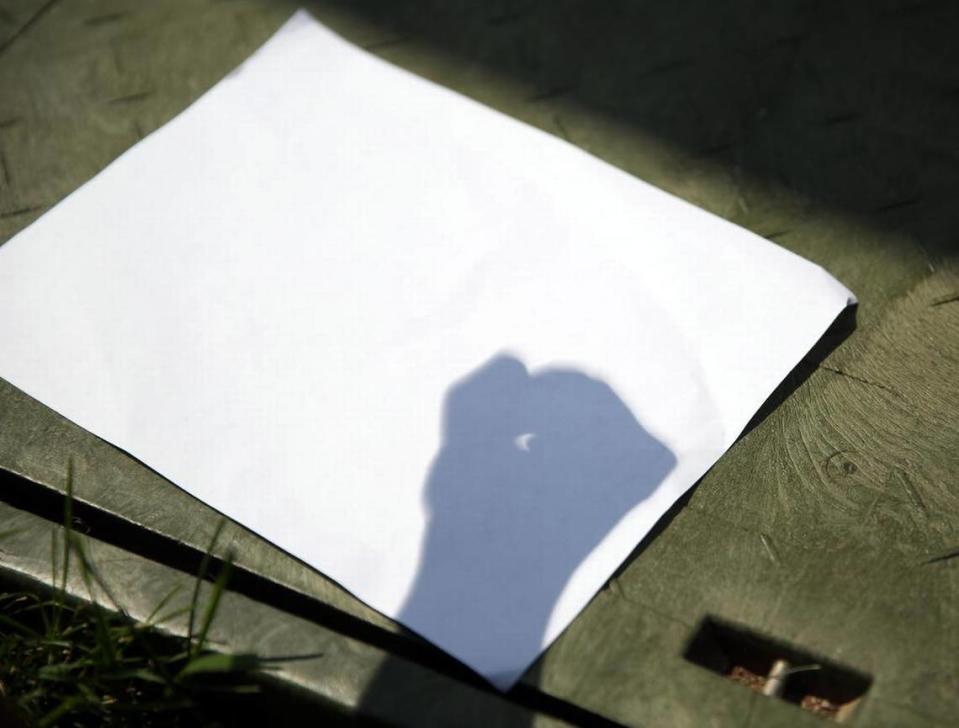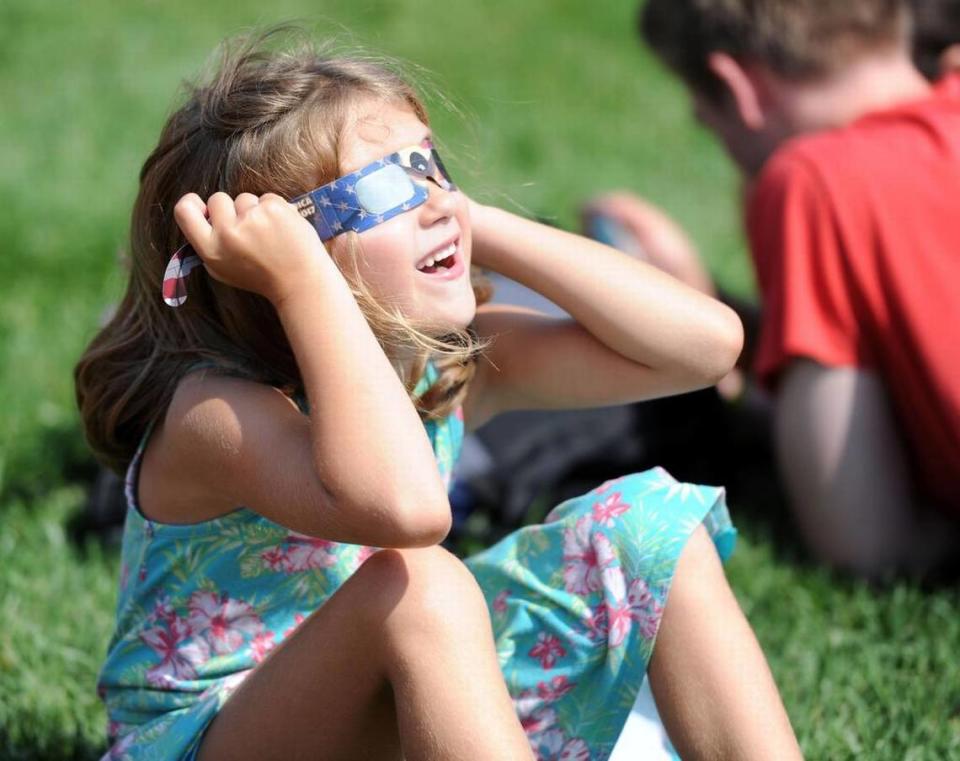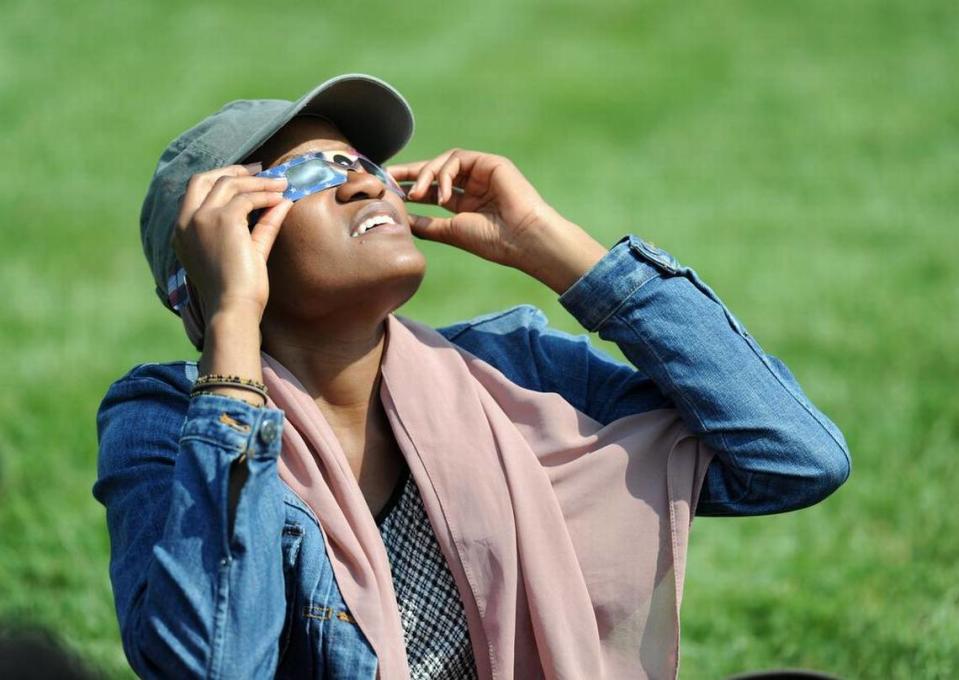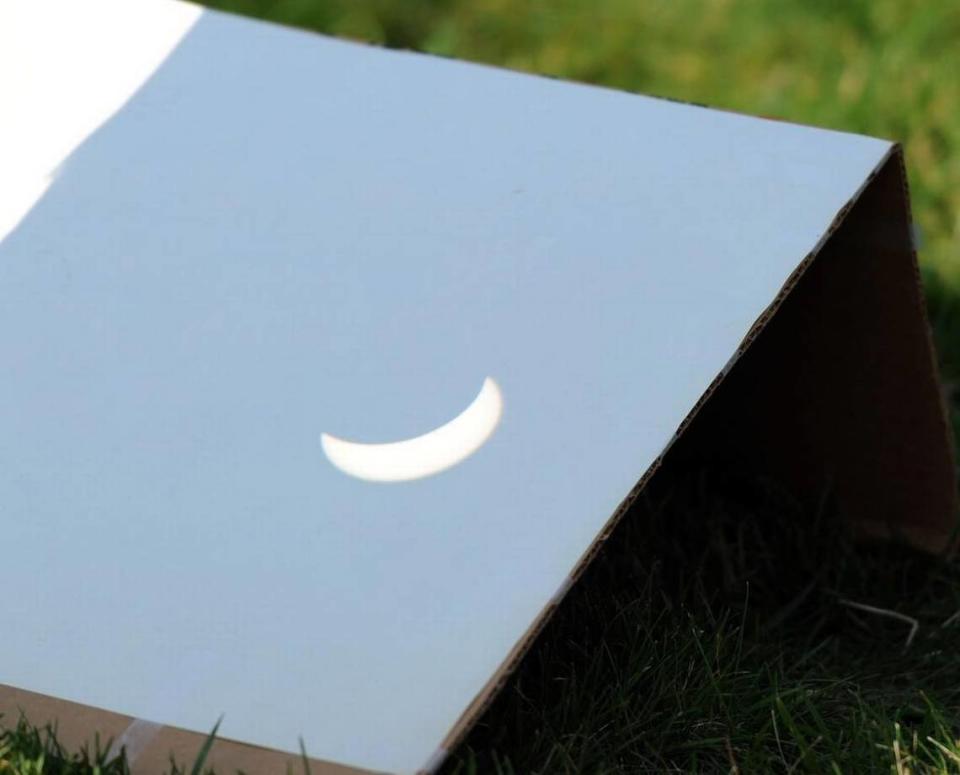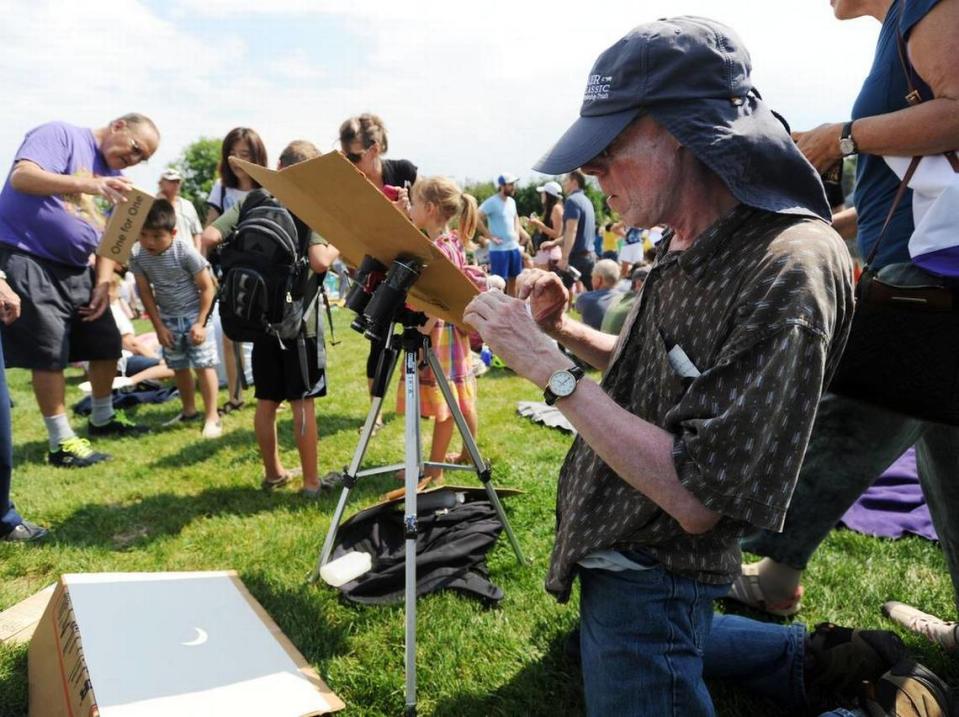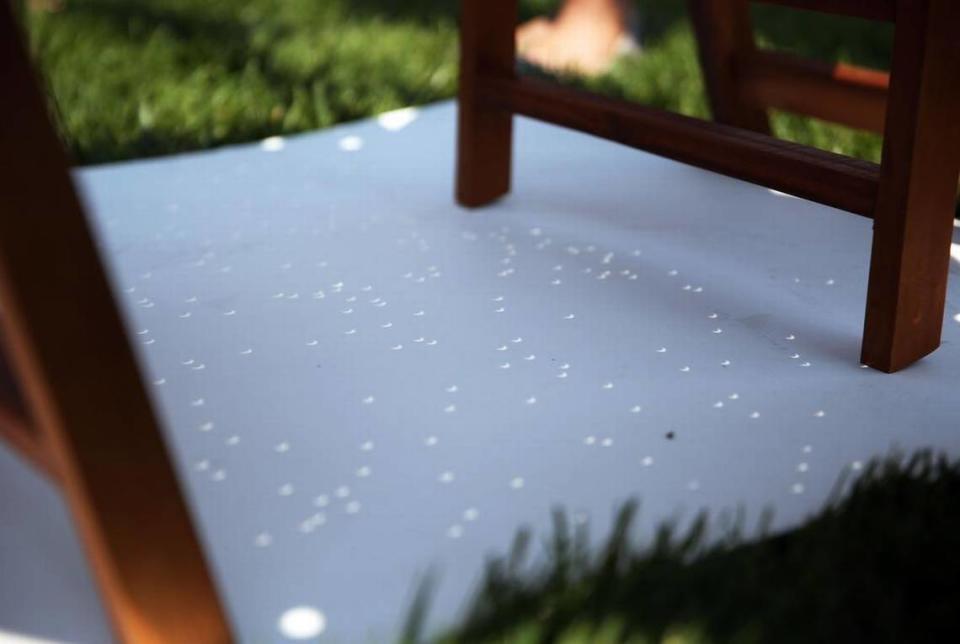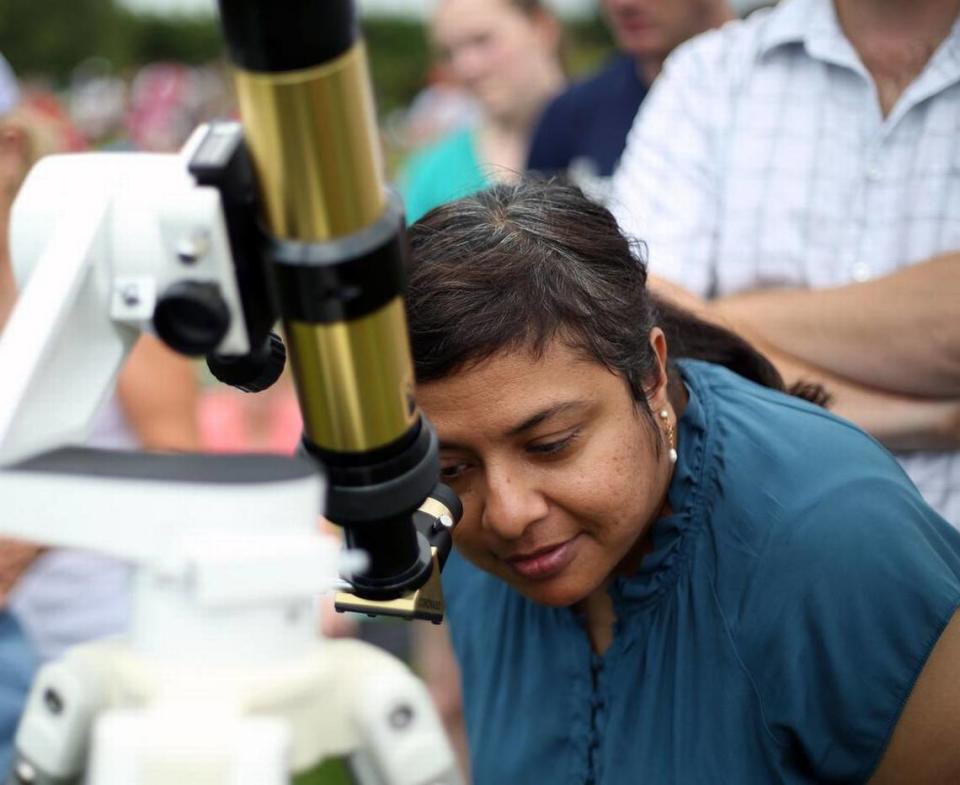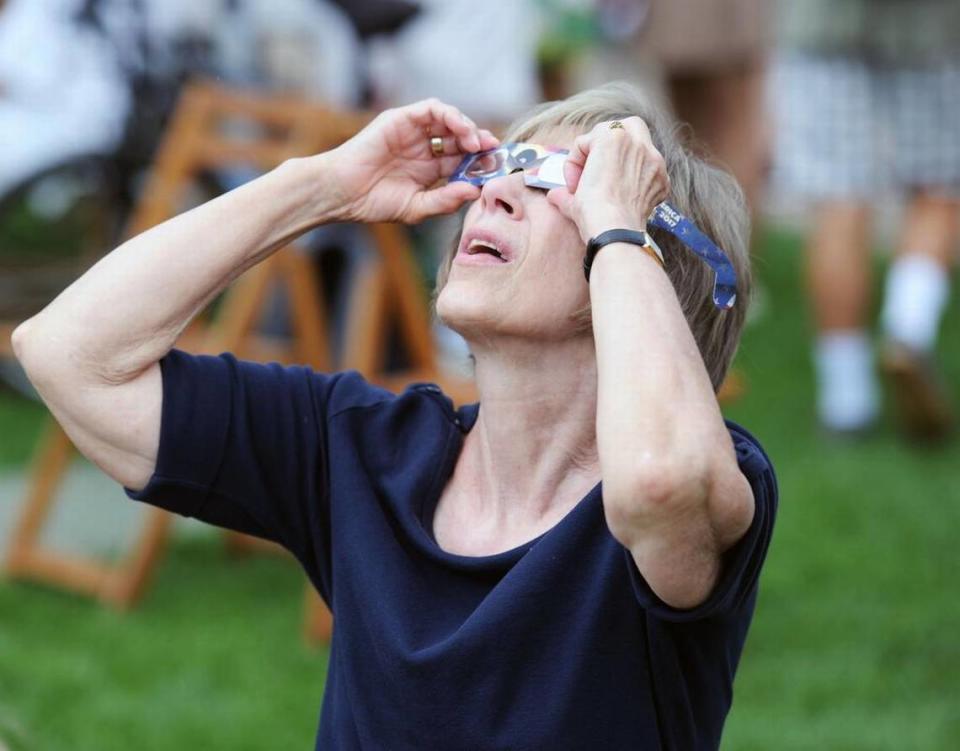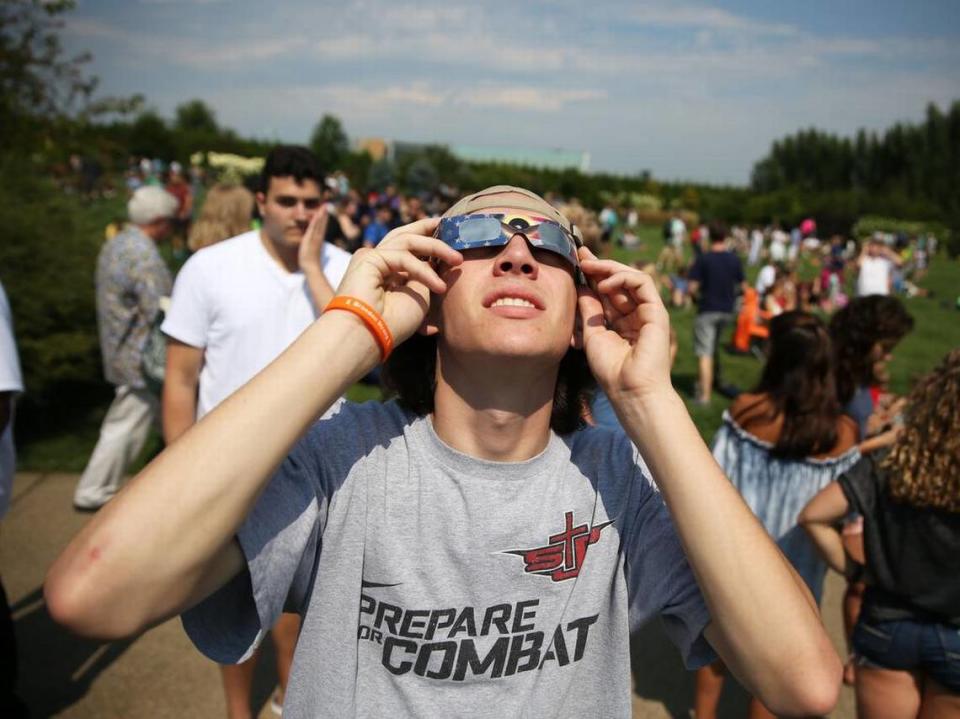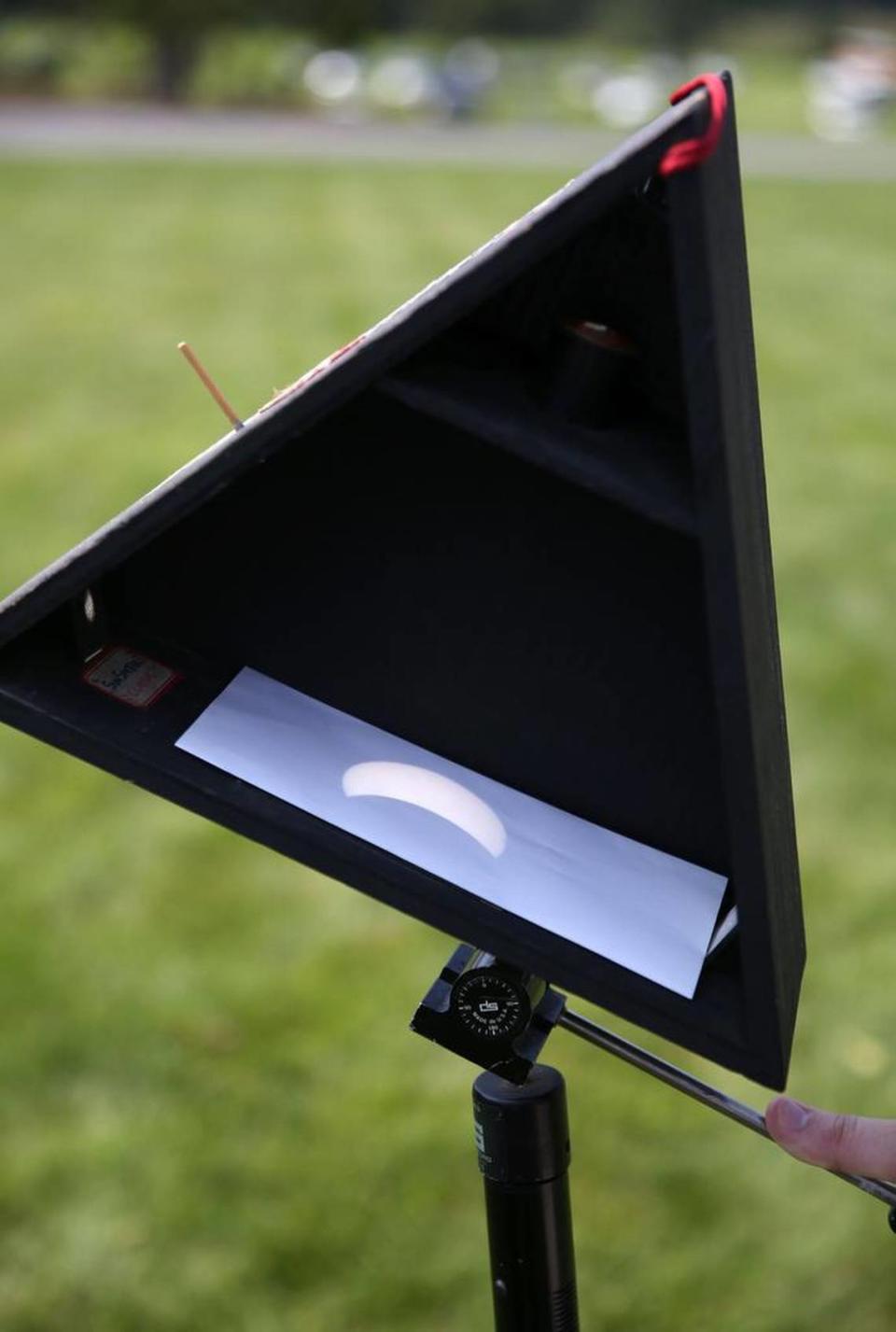Where were you during the last solar eclipse? Look back at what it was like in Centre County
The 2024 total solar eclipse on April 8 is shaping up to be one of the county’s most viewed astronomical events of the decade, with many in Centre County finalizing their viewing plans.
This total eclipse is the first since Aug. 21, 2017 and the next one after this isn’t expected until August 2044.
With schools announcing early dismissals, businesses selling protective solar eyewear and SolarFest at Medlar Field at Lubrano Park set to draw crowds from all over the county, this eclipse is garnering a lot of attention, and drawing comparisons to the eclipse of seven years ago.
In 2017, an eclipse hadn’t occurred in the United States in 26 years and Centre County was just outside the path of totality, resulting in about 80% of the sun being blocked.
The Arboretum at Penn State was a main gathering point for many area residents, with over 1,000 people congregating to get a look at the eclipse.
There was a communal feeling to the event, the CDT reported at the time, as spectators shared the special viewing glasses that were in short supply due to a national shortage.
Other, more inventive means of eye protection were spotted at the event as well — from cereal boxes fitted with protective lenses to other cardboard lens creations.
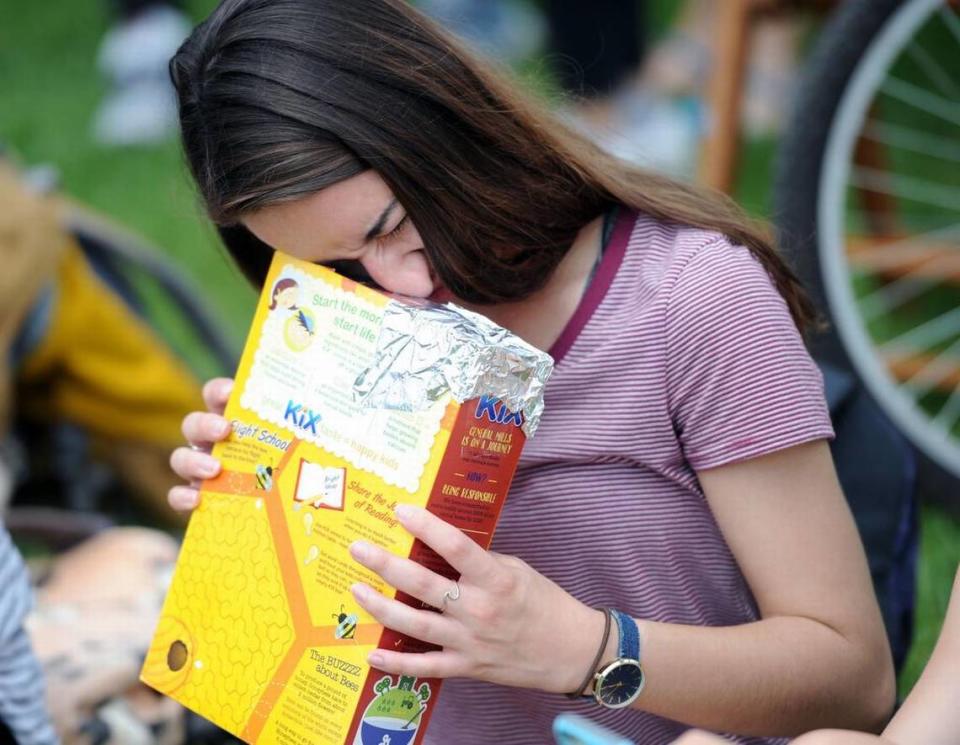
How will this year’s eclipse be different?
In 2017, the eclipse’s path of totality did not cross through Pennsylvania. But this year the path will travel across the northwestern area of the state, near Erie. Those near State College and central Pennsylvania should see obscuration of roughly 95%, while the Philadelphia area’s obscuration lowers to about 90%.
According to NASA, this eclipse will also offer a wider path of totality, allowing for more people to see the event. This year’s path will be nearly twice as wide as 2017’s, as the moon will be closer to Earth.
NASA also says that this year’s eclipse can be viewed for a longer duration of time than the most recent one, with the eclipse on April 8 estimated to last for about four minutes and 28 seconds in north-central Mexico, which is an increase from the two minutes and 42 seconds of maximum totality recorded near Carbondale, Ill., during 2017’s eclipse.
In addition to the changes in viewing time and the wider path, this year’s has also been project to show an increased amount in solar activity, according to NASA. Because the sun will be near its magnetic field’s solar maximum, an increased amount of phenomena such as streamers and prominences could be seen.
With luck, a coronal mass ejection — or a large eruption of solar material — could be seen as well.
Scenes from the 2017 eclipse

